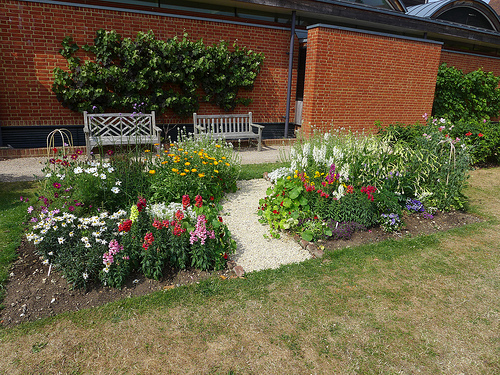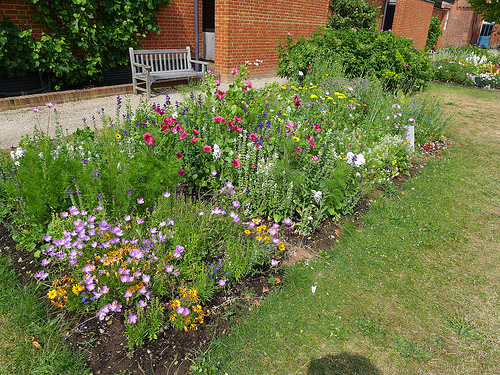Volunteers Voice #8: Plot plans for 2014
Our two gardening volunteers, Tony and Roger, spent the last year transforming our plots into bee friendly areas, designed to encourage bees into our garden and to show visitors how easy it is to support them. Tony and Roger have kindly written a post for us about what they have in store for 2014…
Following the use of plants that are attractive to pollinators last year, (read our last garden blog post for more info) it has been decided to double the area of direct-sown hardy annuals. Last year, the plot nearest to the main entrance to the gardens was planted with bee-friendly half-hardy annuals. These have to be raised under heated glasshouses and, although the effect can be more carefully planned, it is a costly exercise compared with direct sowing of hardy annuals.

The second plot was sown with four different mixtures of hardy annual flowers sold by Thompson and Morgan, the plot being divided into four beds with the following mixtures:
- Annual early flowering mix
- Wildflower honey-bee flower mix
- Wildflower mix
- Butterfly mix

There was a huge range of species found within these mixtures and, when in full bloom, the whole plot sometimes seemed to be humming. To be honest, I cannot for the life of me prove that more butterflies landed on the butterfly mixture bed or that fewer bees landed on the butterfly mixture than on the bee-mixture bed. But come on, ye of little faith! Of course the little fellahs know what they are doing.
Those of you who ventured outdoors in April may remember that the seed was sown in drills about 10 cm apart (making hoeing and weeding easier) and then covered with horticultural fleece. This had a dramatic effect on germination, providing warmth and conserving moisture whilst allowing water to penetrate. Many seeds had begun to germinate in 10-15 days and as soon as most species were pushing against the fleece we took it off and gave them their freedom. If you are even a moderately interested gardener, do try a packet or two in any sunny corner that you don’t really know what to do with. They come in packets of 1 gm which is enough to cover one per square metre. I offer a tip, however. If you go onto the Thompson and Morgan website you will find these mixtures hard to find. Go to their search box and type in “bee mixture” etc. as listed above. The same problem arises with their catalogue and a here a telephone call seems necessary. Never mind, they are very charming!
Caring for bees
This year, in addition to growing plants that attract bees, we are planning to create examples of the habitats where bees like to build their nests. Visitors will be given a bee trail to follow which will lead them to all the places in the garden where bees might be nesting, so that they can see what they can do in their own gardens to encourage bees to take up residence.
Tony Hales and Roger Sym
If you have any horticultural questions, Tony Hales has kindly offer to answer your questions. Post a comment below or leave a question with staff at reception.
